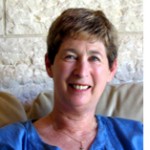By Dorothea Shefer-Vanson

JERUSALEM — After several years of work, the reconstruction of the Israel Museum ended last summer when, amid fanfares and extensive publicity, the museum re-opened its doors to the public. We volunteers did not stop working during the period of renovation, but our activities were severely curtailed. So it was with great excitement and enthusiasm that we resumed our duties in the renewed museum.
Several months have passed since then, and some – though not all – of the excitement has abated. The refurbished museum is bigger, better, and easier to navigate than before, though our services as purveyors of information are still required. Visitors from far and near still flock to inspect the new galleries, and many compliment us for the stunning way the museum’s exhibits are displayed. Although the museum possesses many thousands of items, the overriding principle behind the current displays is ‘less is more,’ so that instead of myriads of objects vying for the visitor’s attention, each object has been carefully chosen and is exhibited in a way that best sets off its unique properties.
Even when most of the museum was closed, some sections – the Shrine of the Book, the model of Jerusalem in the time of the Second Temple and the Youth Wing – remained open. The Youth Wing, which holds special exhibitons as well as art-related classes, lectures and activities for young and old throughout the year, continued to do so even when getting there involved negotiating a potentially dangerous building site. Now, however, the museum’s three main galleries – Archaeology, Jewish Art and Culture, and European and Israeli Art – display a plethora of marvellous objects and artifacts. In addition, there is the Sculpture Garden, an extensive exhibition of contemporary art, galleries devoted to art from the Americas, Africa and the Far East and various changing exhibitions, adding constant interest and innovation to the permanent displays.
My tour of duty on Sunday afternoons ends at five o’clock, when the museum closes. In recent weeks I have noticed that it is just then each week that lively groups of Ethiopian children enter the museum and make their way to the Youth Wing. They proceed to several classrooms, where they sit at tables, are given sandwiches and a drink, and then begin to draw, paint and sculpt under the supervision of members of the museum’s teaching staff. Upon enquiring, I was told that the children are recent immigrants currently residing at the absorption centre in Mevasseret Zion and are brought by bus to the museum each week. All the equipment and materials are provided by the museum. One of the teachers proudly told me that she has devised a special programme for them that focuses on Africa, adding that this gives the children a lot of pleasure.
But the museum does not limit its activities to the education and absorption of immigrants. Classes for schoolchildren intended to build bridges with the Arab residents of Israel and the territories are held in the Youth Wing. Thus, 12- and 13-year-olds from the Arab village of Silwan share classes and activities with schoolchildren from several Jerusalem neighbourhoods, older children come from the Arab Abu-Tor neighbourhood of Jerusalem, and extensive activities are held for Arab and Jewish teachers.
In addition, Youth Wing staff go to Arab and Jewish kindergartens, where they help and encourage the little ones to produce art work of various kinds. This activity is followed by an outing in which the children are brought to the museum. There is also on ongoing two-year project in conjunction with the Nazareth municipality in the framework of which 3,000 youngsters are brought to the museum (not all at once), after which a happening is held in Nazareth.
If more funds were available, more such activities could be held, I was told by Eldad Shealtiel, the director of the Youth Wing.
*
Shefer-Vanson, a freelance writer and translator, is based in Mevasseret Zion, can be reached at dorothea.shefer@sdjewishworld.com This article initially appeared in the AJR Journal, published by the Association of Jewish Refugees in the United Kingdom.